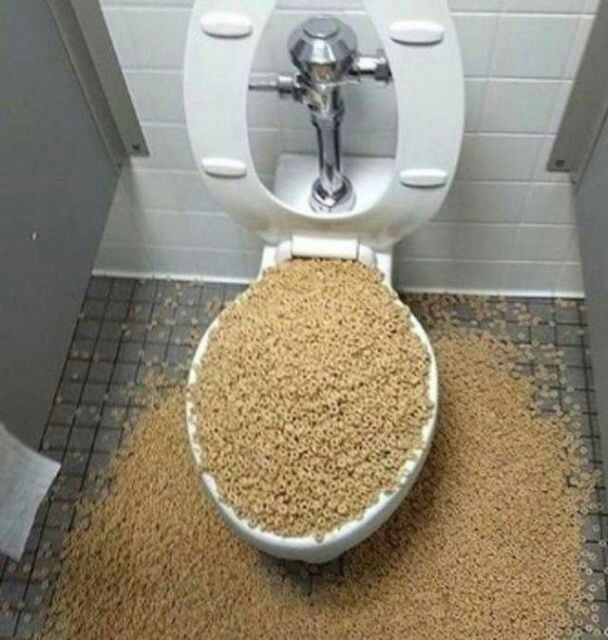Is it Permitted to Dispose of Food Down the Toilet?
Is it Permitted to Dispose of Food Down the Toilet?
Blog Article
This article on the next paragraphs on the subject of Think Twice Before Flushing Food Down Your Toilet is totally engaging. Don't skip it.

Introduction
Lots of people are frequently faced with the dilemma of what to do with food waste, especially when it involves leftovers or scraps. One typical question that arises is whether it's okay to flush food down the toilet. In this short article, we'll explore the reasons that people could think about flushing food, the effects of doing so, and alternate methods for proper disposal.
Reasons why individuals might take into consideration flushing food
Lack of recognition
Some individuals might not understand the potential harm triggered by purging food down the commode. They may erroneously believe that it's a safe practice.
Comfort
Flushing food down the bathroom may look like a fast and simple option to getting rid of undesirable scraps, especially when there's no neighboring garbage can available.
Laziness
In some cases, people might simply select to flush food out of sheer negligence, without considering the repercussions of their activities.
Repercussions of flushing food down the commode
Environmental influence
Food waste that winds up in rivers can add to contamination and injury aquatic communities. Furthermore, the water utilized to flush food can stress water sources.
Plumbing issues
Flushing food can cause clogged up pipes and drains pipes, creating pricey pipes repairs and troubles.
Sorts of food that ought to not be purged
Coarse foods
Foods with fibrous textures such as celery or corn husks can obtain tangled in pipelines and trigger blockages.
Starchy foods
Starchy foods like pasta and rice can soak up water and swell, causing clogs in pipelines.
Oils and fats
Greasy foods like bacon or food preparation oils need to never be flushed down the commode as they can strengthen and create obstructions.
Appropriate disposal methods for food waste
Making use of a waste disposal unit
For homes equipped with waste disposal unit, food scraps can be ground up and flushed via the plumbing system. Nevertheless, not all foods are suitable for disposal in this way.
Recycling
Specific food product packaging materials can be recycled, reducing waste and decreasing ecological impact.
Composting
Composting is an environmentally friendly way to throw away food waste. Organic products can be composted and made use of to improve soil for gardening.
The relevance of correct waste administration
Minimizing ecological injury
Appropriate waste management practices, such as composting and recycling, aid lessen air pollution and preserve natural deposits for future generations.
Protecting pipes systems
By preventing the method of flushing food down the bathroom, home owners can prevent pricey pipes repair services and keep the integrity of their pipes systems.
Conclusion
In conclusion, while it may be tempting to purge food down the toilet for comfort, it's important to recognize the potential effects of this activity. By embracing correct waste management methods and throwing away food waste responsibly, individuals can add to much healthier plumbing systems and a cleaner setting for all.
FLUSH FOOD DOWN THE TOILET?
FLUSHING FOOD CAN CAUSE BLOCKED DRAINS IN YOUR HOME
All of the plumbing fixtures in your home are connected to the same sewer pipe outside of your home. This outdoor sewer pipe is responsible for transporting all the wastewater from your home to the Council sewer mains. Even small pieces of food that go down the kitchen sink can cause problems for your sewer. It should therefore be obvious that flushing larger bits of food, such as meat, risks a clog in either the toilet itself or the sewer pipes. Flushing greasy food is even more problematic because oil coagulates when it cools, coating the interior lining of your pipes.
THE TOILET IS NOT A BIN
Food isn’t the only thing that people shouldn’t be flushing down the toilet. People use the toilet to dispose of all kinds of things such as tampons, makeup wipes, dental floss, kitty litter and even underwear. Water goes to great lengths to educate residents about the high costs and stress placed on wastewater treatment systems simply from people flushing the wrong stuff down the toilet. It costs taxpayers millions of dollars each year, and homeowners thousands in blocked drain repairs.
FLUSHING FOOD IS A WASTE OF WATER
Flushing food is a waste of our most precious resource - water. In June this year Level 1 water restrictions were introduced to protect water supply from drought conditions. Much of New South Wales continues to be affected by prolonged drought with recent figures revealing up to 97 per cent of the state remains in drought. Depending on whether you have a single or dual flush toilet, every single flush uses between five and 11 litres of water. In the current climate this is a huge amount of water to be wasting on flushing food that should be placed in the bin (or better yet, the compost).
https://www.jabplumbingsolutions.com.au/blog/can-you-flush-food-down-the-toilet

We hope you liked our article about . Thank you for finding the time to read our content. If you please take the time to promote this article if you enjoyed reading it. Thanks for going through it.
Visit Page Report this page